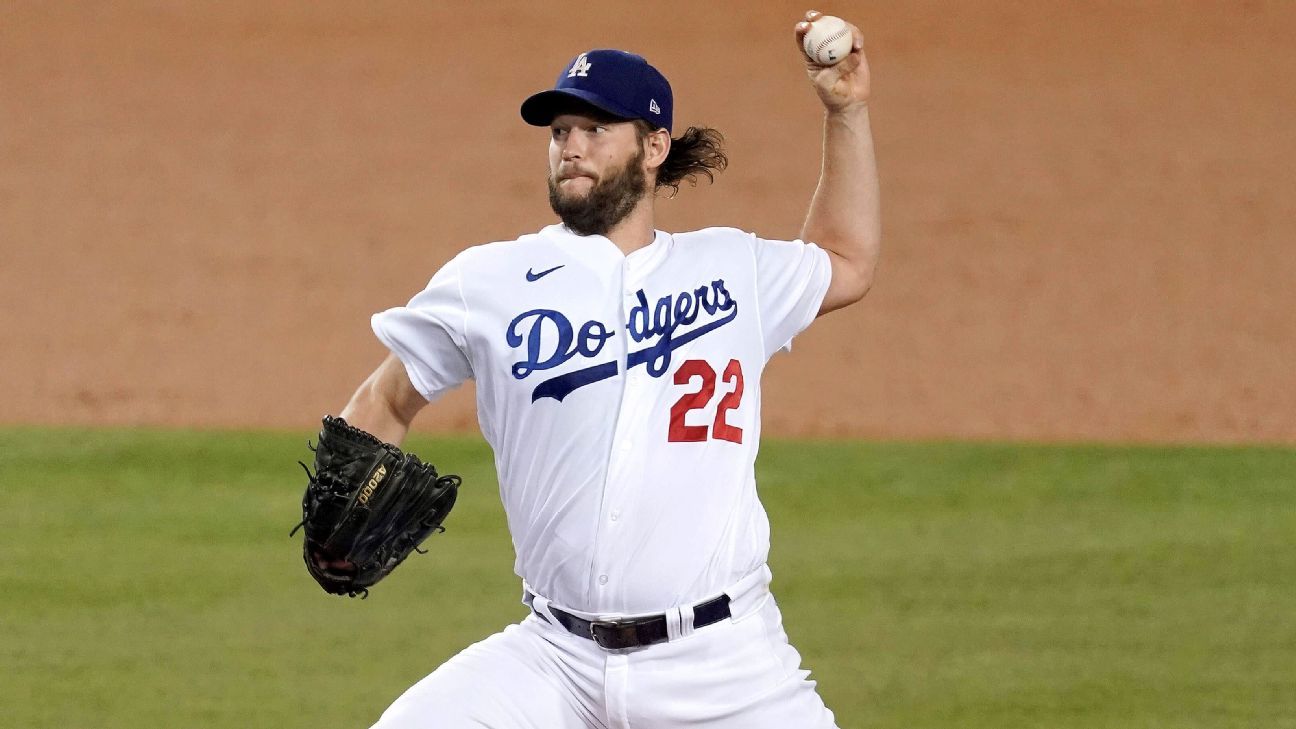
LOS ANGELES -- Clayton Kershaw's 3-1 slider to Luis Urias sailed high, a rare mistake by the distinguished left-hander. It was the eighth inning, there was one out, the Los Angeles Dodgers led by three, and Kershaw's pitch count was up to 88. He looked toward the third-base dugout, made eye contact with his manager, Dave Roberts, and implored him to stay where he was. Roberts sent pitching coach Mark Prior to the mound instead, then watched Kershaw pick off Urias and strike out the next batter, David Freitas, on five pitches to end his outing appropriately.
"This was a fun night," Kershaw said moments later.
It was so much more than that.
It was eight scoreless innings against a Milwaukee Brewers team desperate to keep its season alive. It was 13 strikeouts by a man who 12 months earlier no longer seemed to possess swing-and-miss stuff. It was quite possibly the best postseason start of Kershaw's illustrious career, a gratifying sign for a Dodgers team poised to win it all.
"It was just fun to sit back and watch him make pitches," Roberts said after a 3-0 win in Thursday night's Game 2 of the Wild Card Series eliminated the Brewers and pushed the Dodgers to a five-game National League Division Series.
Kershaw generated 24 swings and misses, his most since June 2016, according to research by ESPN Stats & Information. All 13 of his strikeouts -- a postseason career high -- came on breaking balls, the most since his 2014 no-hitter and the most by any pitcher in the postseason over the past 20 years. Through the first four innings, before the Dodgers' offense finally broke through, Kershaw matched an electric Brandon Woodruff pitch for pitch. After Woodruff folded, Kershaw only seemed to get stronger. All told, he allowed four baserunners.
"It was just a Kershaw outing," Dodgers catcher Austin Barnes said. "It was awesome."
Kershaw's previous postseason outing at Dodger Stadium was Game 5 of last year's NLDS against the Washington Nationals, which shifted on the back-to-back home runs Kershaw gave up to Anthony Rendon and Juan Soto -- on a fastball and a slider that had become indistinguishable from each other.
That night, Kershaw was uncharacteristically somber. He referenced the narrative about his postseason shortcomings and acknowledged its validity. But then he attacked his offseason with purpose. By the time baseball resumed in July, Kershaw had started to see the life return on his pitches. The fastball was consistently surpassing 90 mph and the slider had more shape.
He fashioned a 2.15 ERA and 59 strikeouts through his first nine starts, but then he gave up eight hits in four innings against the Los Angeles Angels in the regular-season finale. His slider wasn't sharp enough, so Kershaw spent the following days working to quicken his arm slot to attain the proper torque on the pitch. It worked. The adjustments weren't always that simple.
"I've been known to be pretty stubborn, do the same things no matter what in between starts," Kershaw said. "I think that might not be the best idea sometimes."
The Dodgers will now face Friday's Game 3 winner between the St. Louis Cardinals and the San Diego Padres, beginning Tuesday in Arlington, Texas, at Globe Life Field, one of four quasi-bubbles Major League Baseball has established for the remaining three rounds of the postseason. They'll hope to remain there all the way through the World Series -- a World Series Kershaw can win in his hometown.
"If you would've told me that the first time I'm ever gonna pitch in Texas is in the division series against somebody that's not the Rangers -- I mean, it's the craziest thing ever," Kershaw said. "I've been to [Arlington] a few times. I've never actually gotten to pitch there, so it's gonna be weird. I live literally 10 minutes from the team hotel, and so I'm gonna be staring at friends and family through a glass wall. It's a weird deal, but the good news is, it's a weird deal for everybody. I think the bubble will be fun."















 Phone: (800) 737. 6040
Phone: (800) 737. 6040 Fax: (800) 825 5558
Fax: (800) 825 5558 Website:
Website:  Email:
Email: 






